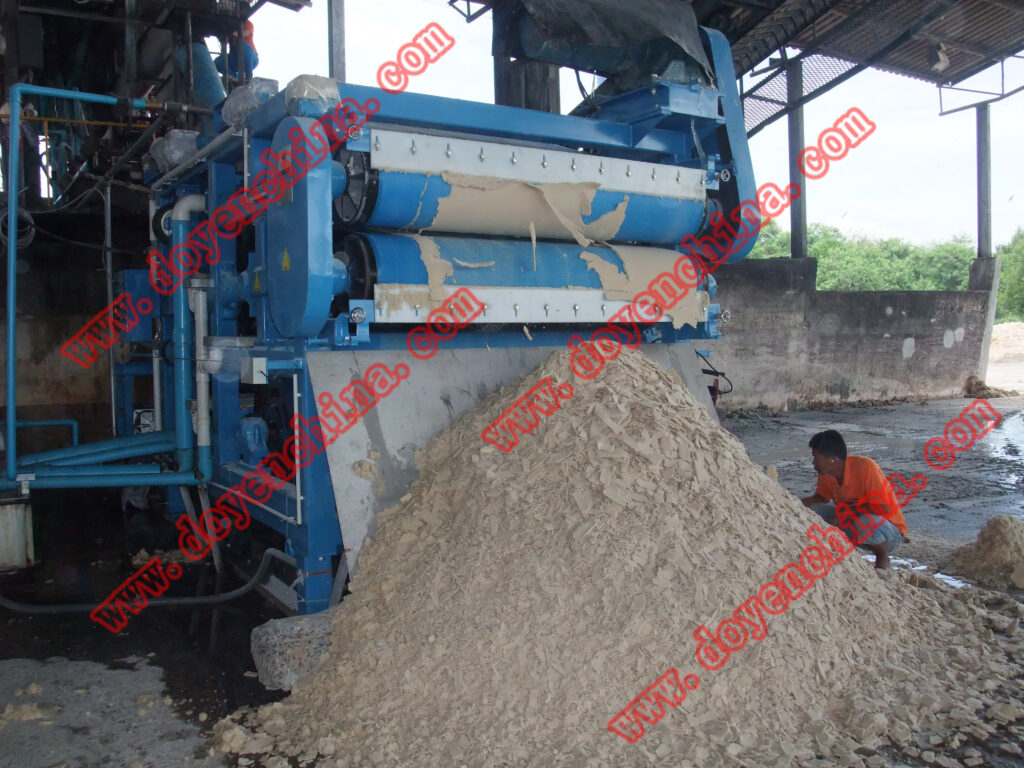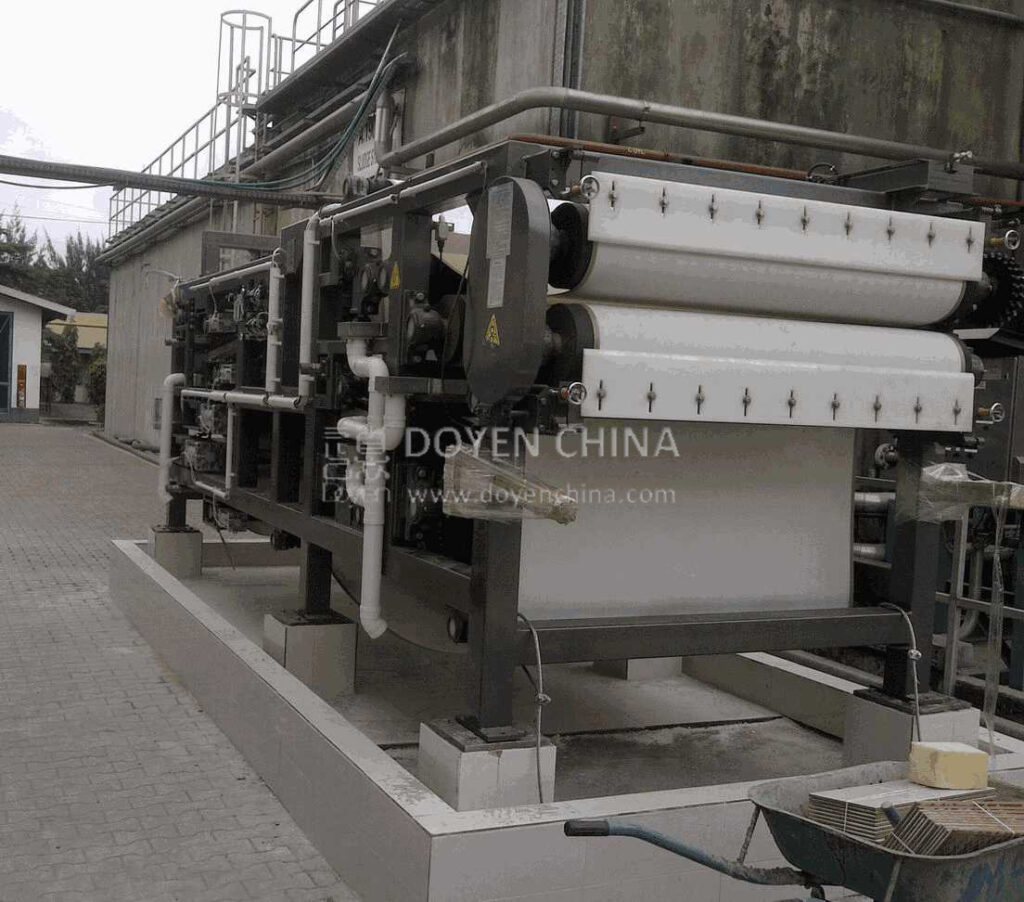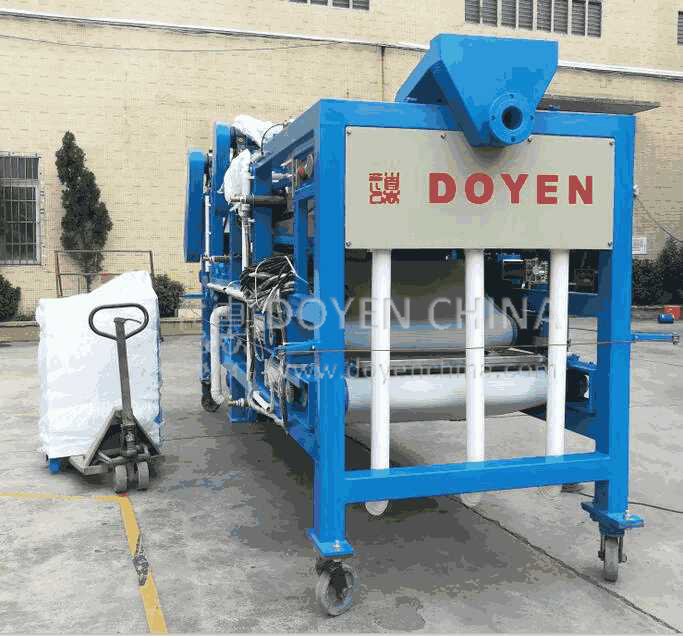

Tel:
+86-757-8633-0278
Email:doyen@doyenchina.com
Fax:+86-757-86287390
Address:Room 201, Building No. 24, Yicui Rose Garden, No. 2, Jihua 7 Road, Chancheng District, Foshan City, Guangdong Province, China 528000.
(Old soil mud, iron ore mud, lead-zinc ore mud, sand field mud are high specific gravity sludge) 1 Introduction Kaolin is the general term of a family of clay minerals, its basic composition is kaolinite group and halloysite group, mainly composed of It is composed of kaolinite and halloysite with a content of more than 90%, followed by hydromica, which is often mixed with pyrite, limonite, anatase, quartz, chalcedony, alum, etc., and sometimes a small amount Organic matter. Kaolin has excellent process characteristics such as plasticity, cohesiveness, sinterability and fire resistance, so it is widely used in ceramics, papermaking, rubber, plastics and refractory materials industries. There are three main types of genesis of kaolin deposits: weathering, sedimentation and hydrothermal alteration. The processing technology of kaolin ore depends on the nature of the ore and the final use of the product. There are two processes used in industrial production: dry process and wet process. Usually hard kaolin is produced by dry method, and soft kaolin is produced by wet method.
2 Dry beneficiation process Dry process is a simple and economical processing technology. After the mined ore is crushed to 25.4mm by a hammer crusher, it is fed into the cage crusher to reduce the particle size to 6.35mm. The hot air in the cage crusher reduces the moisture of the kaolin from 20% of the mined Around 10%. The crushed ore is further pulverized by a blown Raymond mill equipped with a centrifugal separator and a cyclone dust collector [2]. This process can remove most of the sand and gravel, and the products are usually used as low-cost fillers in the rubber, plastic and paper industries. When used in the paper industry, the product can be used as a filler where the ash content of the filler layer is less than 10% or 12%. At this time, the brightness of the product is not high. When the dry method requires high whiteness of the product, the product produced by the Raymond mill must be dry-type iron removed. The advantage of the dry process is that it can save the process of product dehydration and dry operation, reduce the loss of ash, the process flow is short, the production cost is low, and it is suitable for drought and water shortage areas. However, to obtain high-purity and excellent kaolin, wet process is necessary.

3 Wet processing technology The wet processing technology includes three stages: ore preparation, mineral processing and product processing. The preparation stage includes batching, crushing and mashing operations. Slurrying is the mixing of kaolin ore, water and dispersant in a mashing machine to make pulp. The mashing operation can disperse the ore, prepare the kaolin slurry of appropriate fineness for the sorting operation, and remove the large grains of sand at the same time. The beneficiation stage may include hydraulic classification, flotation, selective flocculation, magnetic separation, and chemical treatment to remove iron and titanium impurities. The product is stripped by agitation and scrubbing and then leached by iron oxide. The clay with sufficiently high brightness and good coating properties may not be treated. Magnetic separation and stripping are directly sent to the leaching operation. After leaching, alum is added to the slurry to agglomerate the clay minerals and facilitate dehydration. The bleached clay is dehydrated with a high-speed centrifuge, rotary vacuum filter or filter press. Filter or filter press dehydration. The filter cake is re-dispersed into a 55%-65% solid slurry, and then spray-dried to make a loose dry product. Part of the dry product is mixed into the dispersed ore pulp to make 70% solids and transported to the paper mill by ship. The unselected final product has lower brightness. Only when magnetic separation, froth flotation or selective flocculation is configured in the process can high-brightness clay products be obtained. However, these independent operations have their own advantages and disadvantages. Therefore, the industry usually adopts two to three combined processes of these processes for the comprehensive utilization of clay resources.
3.1 High-gradient magnetic separation The dyeing impurities in kaolin are weakly magnetic, so they can be removed by a high-gradient magnetic separator. The U.S. uses the PEM-84 wet high gradient magnetic separator to reduce the Fe2O3 in the kaolin ore from 0.9% to 0.6%, and Ti2O3 from 1.8% to 2.0% to 0.8%. This high-gradient magnetic separator uses stainless steel wool as the medium, and when the field strength is 1.5-2.0T, it needs power consumption of 270-500kw. my country has conducted wet research on Hunan Suanting, Leiyang, Poluo, and Hengling clay [3-6], and all have achieved good test results, especially the removal of iron and titanium from kaolin by vibrating high gradient magnetic separation. A very good test index. According to the comparative test results of my country’s CLY500 vibratory high gradient magnetic separator for kaolin in Leiyang, Hunan and the high gradient magnetic separator of PEM-84 in the United States, from the perspective of reducing iron and titanium impurity content and increasing whiteness, China’s high gradient magnetic separator The performance of the selection machine is better than that of the United States. Because some iron impurities in some kaolin ore exist in the form of silicate, the magnetic properties are very weak, and titanium exists in the form of rutile, the magnetic separation method is difficult to work, so the process is usually accompanied by other operations such as flotation and selective flocculation. To improve the quality of the product. In recent years, superconducting magnetic separators have been successfully applied to kaolin separation, which not only reduces energy consumption, but also greatly improves field strength, and the quality of kaolin concentrate is also higher. The Eriez superconducting magnetic separator has the characteristics of rapid magnetization, which can reach a high design field strength within 60s, and the demagnetization time is short, which greatly shortens the time required to flush magnetic impurities from the magnet during the load cycle. Its energy consumption is low, about 80% less than the conventional magnetic separator, and the processing capacity is large, up to 100t/h. The United Kingdom has tested a reciprocating spiral tube superconducting magnetic system. Its design is similar to that of a conventional pot-shaped magnetic filter. The difference is that it still retains the superconducting magnet in the excited state during the working cycle without switching control. Continuous operation. The 3048mm, superconducting, high-gradient magnetic separator designed by Humboldt, Germany has a simple structure, low operation and maintenance costs, and good stability.

3.2 Froth flotation The purpose of flotation operations is to flotate titanium impurities from kaolin. Because the impurity particles are extremely fine, the carrier flotation process is usually used. The carrier mineral can be calcite, silica sand scrubbing to remove surface dirt, while scrubbing also dissociates anatase and hematite from kaolin minerals, and then a small amount of activator and fatty acid collectors are added to the slurry to be The anatase covered by the collector forms selective agglomeration under high-shear stirring conditions, thereby significantly increasing the particle size. After high-shear stirring and mixing, the slurry is diluted to 15%-20% solids for flotation. Kaolin The alunite in it can also be removed by flotation.
3.3 Selective coagulation/flocculation Comprehensive kaolin mineral processing technology in various countries has the following characteristics:
① The raw ore mined from the mine is roughed on the spot, and a large amount of tailings is discarded in the mine. This not only solves the filling of the goaf, but also reduces the storage and transportation of the raw ore in the concentrator. Only a selection plant is set up for centralized selection Concentrates from various roughing plants;
② Pipeline transportation is generally used between mines and beneficiation plants. Since 1939 in the United States, kaolin slurry has been transported by pipeline;
③High-concentration pulping, dispersing agent is added to the ore pulp in the separation process, flocculant is added in the dewatering process, the product of the filter press or vacuum filter can be sold as a product without drying;
④In addition to hydrocyclone classification, the beneficiation operation also uses centrifugal classifiers, sand mills, high gradient magnetic separators, and flotation machines to improve product fineness and reduce iron, titanium, sulfur and other impurities;
⑤The chemical bleaching process is commonly used by major kaolin producing countries such as the United States, the United Kingdom, and the former Soviet Union to produce high whiteness kaolin products, but its cost is relatively high;
⑥Kaolinshang products are sold in block, coarse powder, fine powder and paste forms. The manufacturer supplies different products according to user requirements. There are many types of drying equipment for the product, but spray drying is used in many applications because of its relatively low cost;
⑦The beneficiation plant not only has a large production capacity, but also has a wide variety of standardized products. Can meet the needs of different users. The products of China Kaolin Company have 34 varieties in four categories. These products are widely used in paper fillers and coatings, raw materials in the ceramic industry, rubber and plastic fillers and reinforcements, white cement linoleum, roofing coatings and waterproofing ingredients, glass fiber ingredients, ink pigments, cosmetics and soap Fillers, carriers for pesticides and fertilizers, binders for abrasive materials, synthetic molecular sieves, petroleum catalysts, atomic energy reactors and many other industries.

5 Conclusion
① The carrier flotation process makes it possible to select fine-grained kaolin. The advantage is to increase the kinetic energy of the particles, but the medicament consumption is high, and the use and processing cost of the carrier mineral is further increased.
②With the help of multivalent cation activation without carrier, anatase can also be floated, but the consumption of fatty acid with collector is higher than other industrial mineral flotation, which may be caused by the large surface area of particles.
③ High-shear agitation plays two roles in flotation. One is to dissociate anatase from kaolinite, and the other is to induce shear flocculation between the anatase particles covered by the collector.
④ The high gradient magnetic separation technology has greatly changed the appearance of the kaolin industry, especially the vibration high gradient magnetic separation can effectively remove the iron and titanium impurities in the kaolin, but has minimal impact on the particle size composition, physical and chemical properties of the product, and can be produced Produce high-quality kaolin products. Dry high-gradient magnetic separation treatment of hard kaolin can eliminate product dehydration and reduce product loss. It is suitable for dry areas with little water. The superconducting high gradient magnetic separator has low energy consumption and large processing capacity. The product has high purity and will be widely used in the kaolin industry.
⑤ Oxidative bleaching and microbial treatment of kaolin products can greatly improve product quality.
⑥The electrophoresis/electroosmosis dehydration process increases the slurry concentration to about 70%, and the production cost is much lower than spray drying. ⑦Combined processing of multiple operations and more final products are the main features of kaolin beneficiation technology.
Doyen specializes in providing belt press equipment for the Southeast Asian market. Welcome to visit our workshop, according to the actual situation of your company, develop a more scientific dehydration program.Welcome to joyce@doyenchina.com or visit https://www.doyenchina.com.
Dec-05-2020
admin

 +86-757-8633-0278
+86-757-8633-0278 doyen@doyenchina.com
doyen@doyenchina.com Sitemap
Sitemap